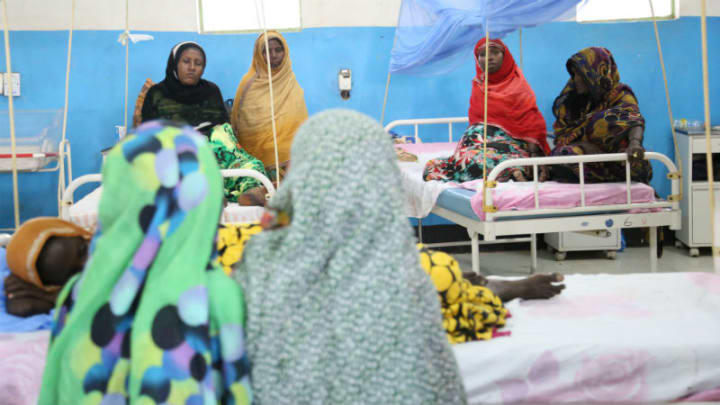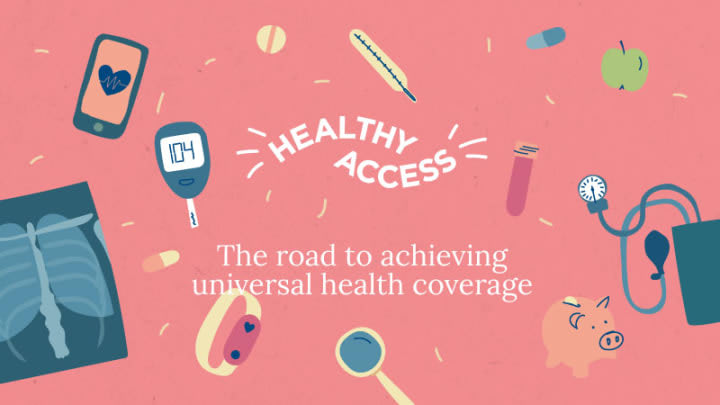
BARCELONA — To guarantee the most vulnerable women are not left behind, it’s important to adopt a rights-based approach to maternal health financing.
Reina Buijs, acting director-general for international cooperation at the Netherlands’ Ministry of Foreign Affairs, said that “since maternal mortality is often the result of a combination of complex issues, we are not able to reach these women if we only adopt a standard approach.”
“Only if you look through a rights lens will you have a clearer picture of what different women, or different groups of women, need.”
— Reina Buijs, acting director-general for international cooperation, the Netherlands’ Ministry of Foreign AffairsInstead, she told Devex, it’s about an “equitable approach,” meaning that you have to create different approaches for women depending on their circumstances.
“If you’ve got a rights-based approach, then you start with the women and [look at] what their needs are, and how you can adjust the services to what they need.”
Sexual and reproductive health and rights is an integral part of a well-functioning health system and a critical component to achieving universal health coverage. However, while the 2030 agenda acknowledges the role of SRHR in achieving the health-, equality-, and education-related goals, lack of funding remains a significant barrier.
The international development community has set a clear goal of reaching universal health coverage by 2030 — while leaving no one behind. How do we ensure access to quality care for all? This content series looks at the technology, practical solutions, and innovative financing tools driving improved access to quality care around the globe.
To eliminate preventable maternal, child, and adolescent deaths alone, the annual funding gap to be bridged stands at $33 billion.
Buijs explained that the so-called “global gag rule” — reinstated and expanded in 2017 by U.S. President Donald Trump to the dismay of many global health providers — has generated uncertainty, with the loss of much financing for organizations working to improve women’s sexual and reproductive health and rights.
The expanded policy has put some $8.8 billion in global health funding on the line, making it even more important to place the women at risk of losing access to necessary services at the center of such programs.
“The impact is tremendous, especially given that U.S. financing used to be quite big in this area. So that's a real loss,” Buijs said.
It has been estimated that up to 26 million women around the world will be excluded from contraceptive services and supplies as a result of the reinstated policy.
Yet innovative financing could help reach some of the women who can’t access necessary services as a result of the reinstated rule, according to Buijs, by ensuring there is “no organization in between that can be targeted by a gag rule.”
“Through innovative financing, you can find ways that go beyond the traditional public health systems and already-existing ways of reaching women.”
Buijs discussed the importance of adopting a rights-based approach to maternal health care and the consequences of the gag rule.
The following conversation has been edited for length and clarity.
Why is it important to integrate a rights-based approach in financing for maternal health?
If you just start from the public health problem, you may forget that the needs of different women are different, and then you’ll end up serving those who are able to find you through public or private services. You won’t cater to those most in need, because their needs are different. Only if you look through the rights lens will you have a clearer picture of what different women, or different groups of women, need.
That's why we think this rights-based approach is so important.
For instance, if you talk about family planning, it's of course about making contraceptives available, but if you don’t know what challenges or obstacles women face in accessing those contraceptives, then just having the commodities available isn’t enough. You need to work together with them [to understand] how they can access them.
How has the global gag rule affected women’s rights and access to reproductive and maternal care?
In terms of consequences, a lot of organizations are confused. We're put in a really difficult position about what to do. Either [you] comply with the gag rule and sign the [policy] contract and continue to receive funding, but at the same time, you’re being completely hampered in the work you normally do.
It’s not only abortion or abortion-related activities, it's often far broader: It's about providing health care, medication, contraceptives, and it has no direct link to abortion … Or you can say “No, we're not going to comply with it,” and then lose your financing for the work you want to do for all those women. And that's really an impossible decision that all organizations have to make.
But of course behind these organizations are all the women who [benefit] from the services of these organizations. They are just left on their own. And it's not only because they can't access information and access to safe abortion anymore, but all the other services those organizations were providing such as comprehensive sexuality education, contraceptives provision, often also maternal health checks.
How can partners and donors leverage not only their financial resources but also their advocacy power and expertise to support a rights-based approach?
The best example is the She Decides movement that the former minister of trade and development cooperation in the Netherlands started. Once the global gag rule was reinstated by President Trump, we said “OK, of course we won’t be able — as the Netherlands, and not even collectively as donors — to step in to fill the [financing] gap that exists. However, what we can do is to use some money, but particularly advocacy, to make others aware [of the issue] and look for ways to collectively stand up against it.”
How can funding for maternal health be made more sustainable and less vulnerable to a changing political climate?
First of all, it's governments themselves that need to budget for health services [ensuring they have] enough budget. Of course, we are far from that for many countries.
More from Healthy Access:
► Without 'concrete' directives, new UHC agreement could fall flat
► In quest for UHC, Kenya faces pharmacy regulation battles
► Q&A: Peter Sands on what it takes to create effective health systems
It’s also about looking at other ways of financing, perhaps through voucher systems or direct financing; different ways of innovative financing where there's no organization in between that can be targeted by a gag rule. We need to be very creative to think about other ways of reaching these women — perhaps reaching them more directly through vouchers could be one option.
What’s currently working — and what’s not — in maternal health financing?
What the Global Financing Facility is doing [with] trying to collectively bring to a platform all the available resources for health financing — particularly for children, adolescents, and maternal health. And not only looking at public funding or lending, but also [funding] from the private sector, and I think that’s the way to go. There’s strong ownership at country-level, and the financing from different sources comes together to finance this.
This is from the service provider [perspective] — and of course, service provision needs to be there and it needs to be of high quality — but you also need to think from the women’s perspectives.
There are examples, such as our work with GFF in Mozambique, where I’ve seen a program where women get a voucher, and with that voucher, they can choose where to go for their services so you don’t make them dependent on one organization. If you take that person-centered approach, which is a rights-based approach, then you’ll come with new ideas on how to finance [maternal health].
What can the global health community do to overcome some of the challenges it is facing?
It’s a collective effort — not just looking at maternal health, but bringing in a broader [approach] so that it’s less vulnerable. Secondly, to think way more about results-based financing, that you try to address the inefficiencies outside of the system because I think we can do a lot better there. It can help to have more private [sector] approaches, more business-like approaches in health services as well.
It’s important to work on advocacy and some of the rights-based perspectives that women need to be able to choose. And also, [we need] a lot of investment in comprehensive sexuality education because many women that need access to safe abortions would have loved to prevent [the pregnancy].
That is a very, very important and often neglected part. And it’s not only about comprehensive sexuality education for girls, but also for boys and having a debate about it in society. Again, it’s a rights angle approach and that’s so crucial.
Update, July 8, 2019: This article has been updated to reflect that Reina Buijs is the acting director-general for international cooperation at the Netherlands’ Ministry of Foreign Affairs.
For a closer look at the innovative solutions designed to push for progress on universal health coverage around the globe, visit the Healthy Access series here.





